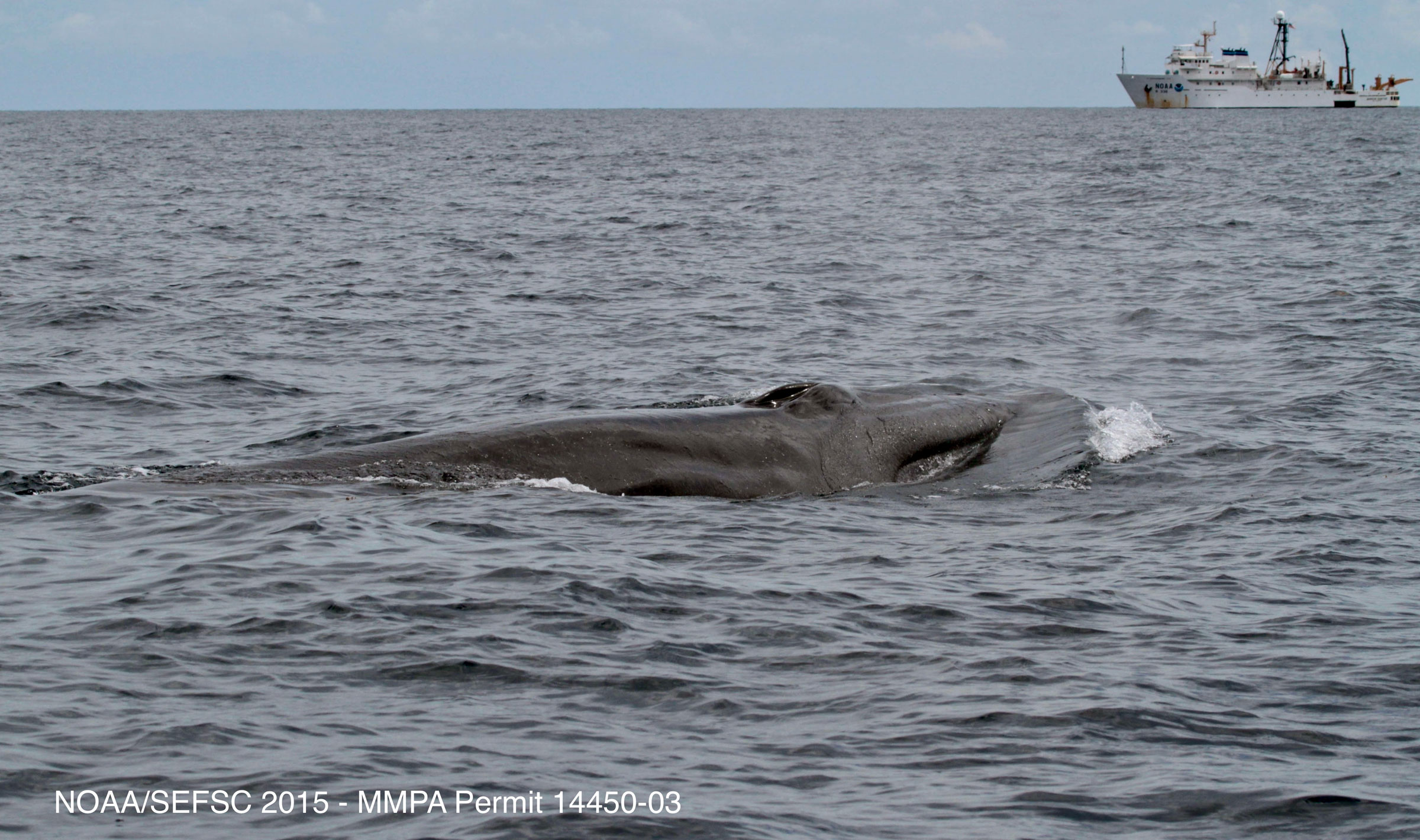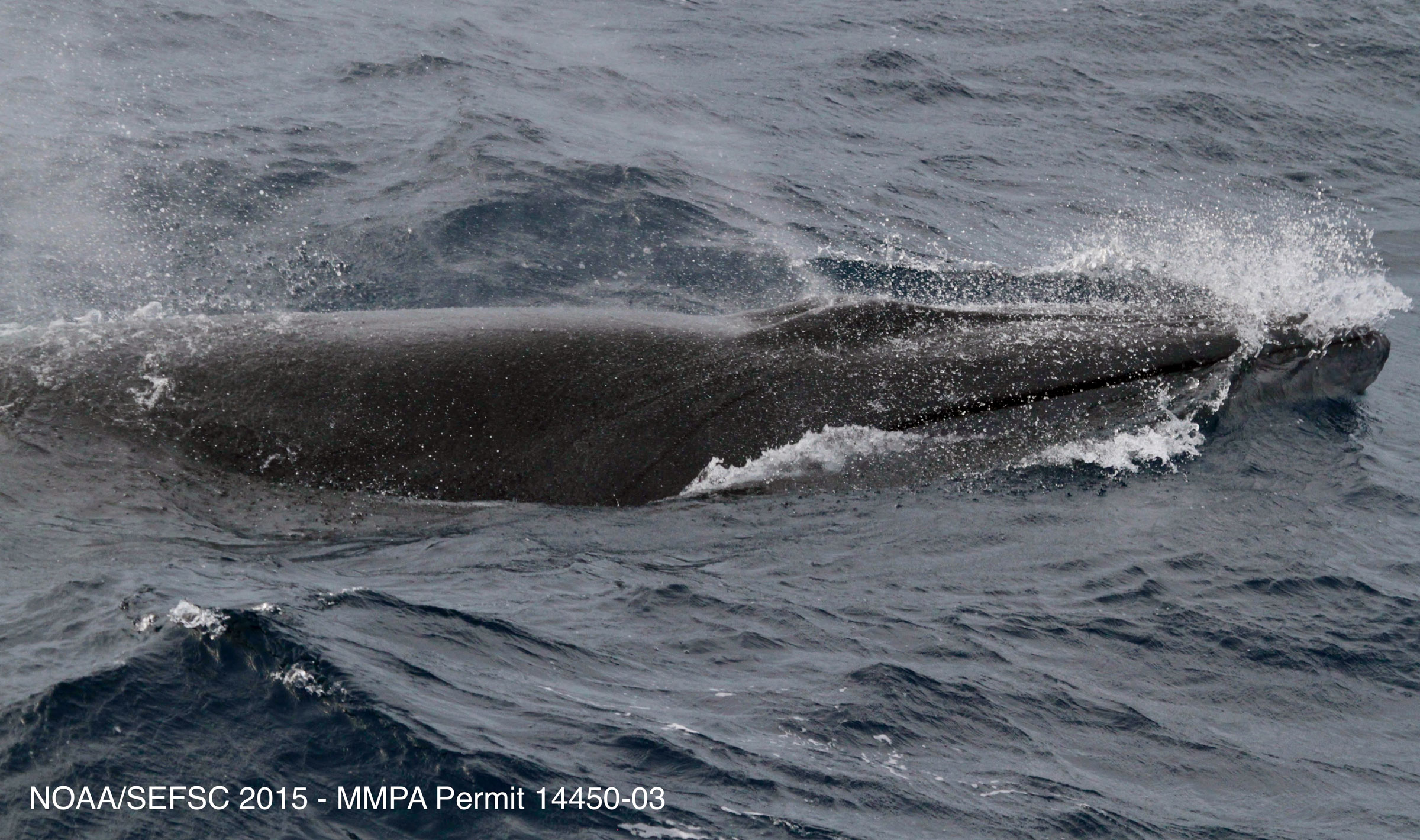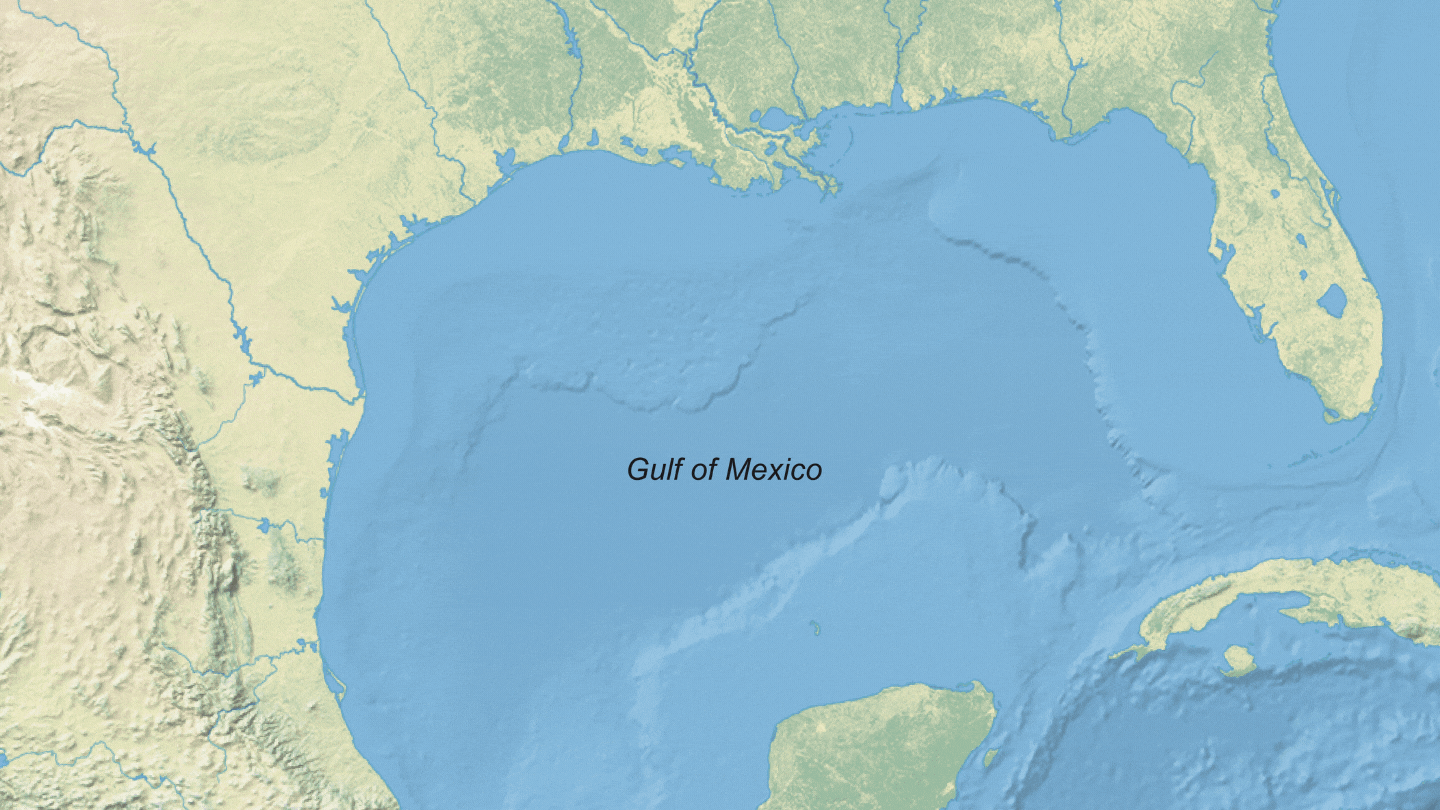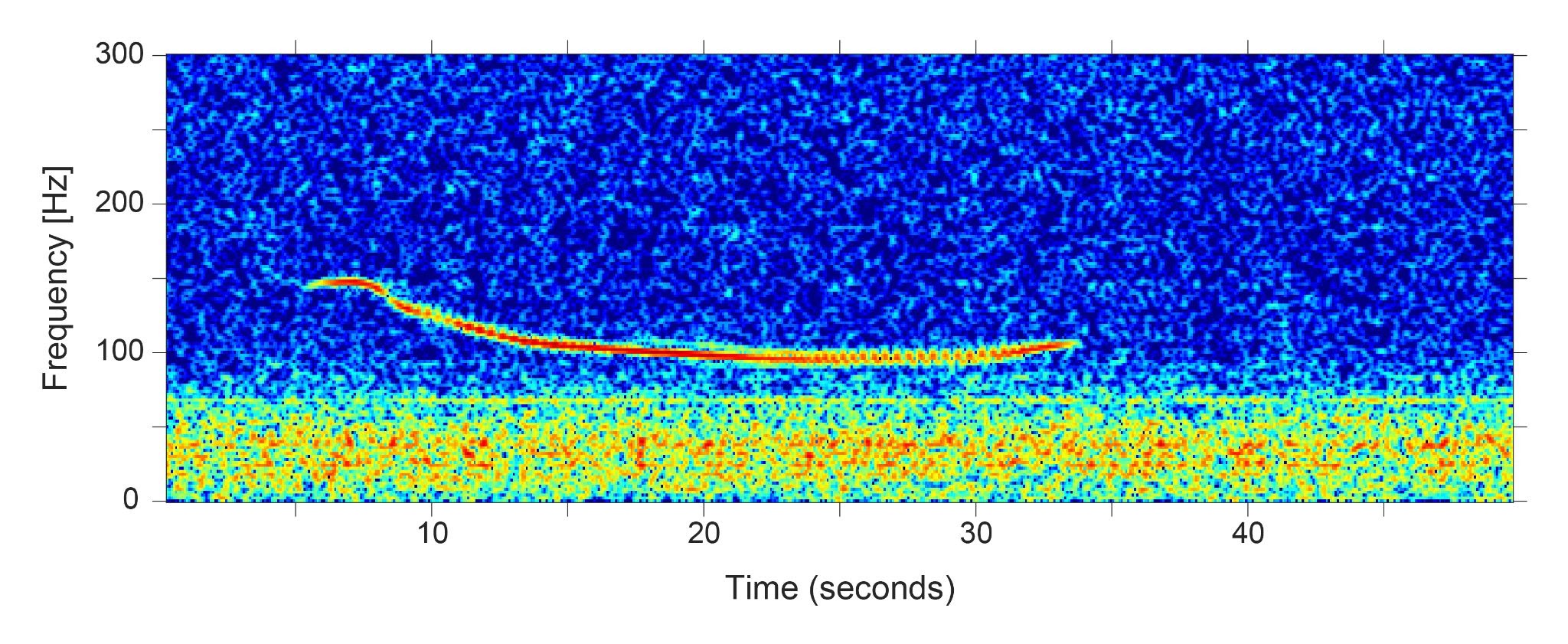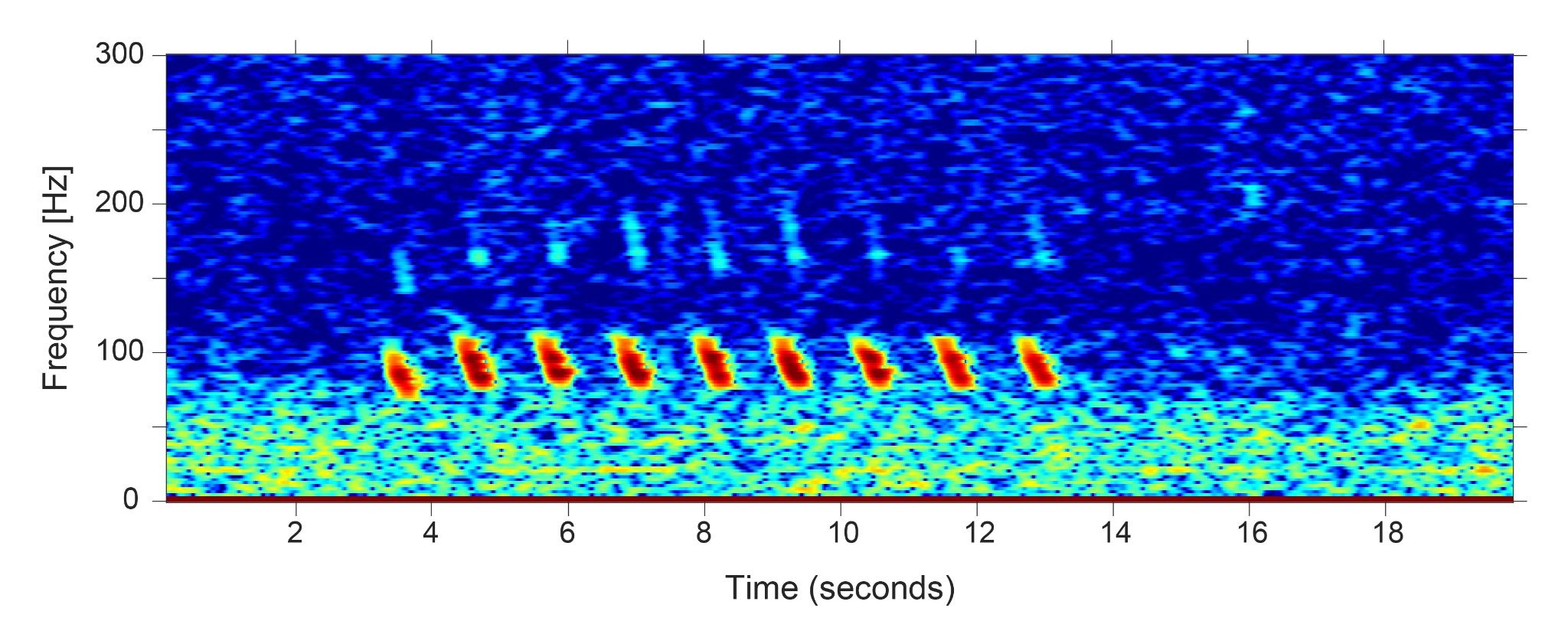Rice's Whale with ship
In the Field: 2021 Gulf LISTEN Cruise
Marine Mammals of the Gulf of Mexico and the Rice's Whale
Marine mammals use sound to communicate, explore their habitat and find food. Our lab uses sounds we record with our autonomous underwater microphones to identify what marine mammals are present based on the signals they produce. Once we know which species are present, we can learn about their behavior, ecology, and even estimate how many individuals are nearby our sensors.
We use our network of autonomous underwater recorders in the Gulf of Mexico to study the marine mammal species that live in this region. With at least 17 species that live there year-round, and a dozen others have been spotted occasionally visiting, the Gulf of Mexico has nearly more marine mammals than any other region in the world. Part of what makes the Gulf of Mexico a great habitat for marine mammals are the nutrient inputs from many rivers (37 on the U.S. side alone!), marshes along the edges of the Gulf, and the way ocean currents move through it, mixing nutrients, which feeds algae, plankton, fish and eventually marine mammals!
Most of the marine mammals in the Gulf are “toothed whales”, which includes fish and squid eating species like dolphins (at least 13 different species of them including killer whales), beaked whales (at least 2 species), sperm whales, and kogia. There is only one baleen whale (filter feeder) in the Gulf of Mexico, the recently renamed Rice's whale (formerly Gulf of Mexico Bryde's whale).
Rice’s whale
Rice’s whales are the only year-round resident baleen whale in the Gulf of Mexico. The calls of these medium-sized whales, which are still being discovered, are likely used for foraging, reproduction, and to communicate with one another. The one call type these whales are known to make is a low-frequency downswept pulse, so low in frequency that they are barely audible to the human ear. Many more well known baleen whales, like blue and fin whales, make similar calls to this, although not usually repeated like the Rice’s whale.
Another sound that may be produced by the Rice’s whale is a “long-moan” (Rice et al., 2014). This call type lasts for over 20 seconds and is extremely unique. In some instances, these long-moan call types are followed by a tonal-sequence consisting of 1-6 nearly constant-frequency tones around 103 Hz.
One of the goals of the Gulf LISTEN project is to continue studying this endangered animal by understanding why they produce their calls and to monitor their populations in the face of increasing anthropogenic threats in the Gulf of Mexico.

